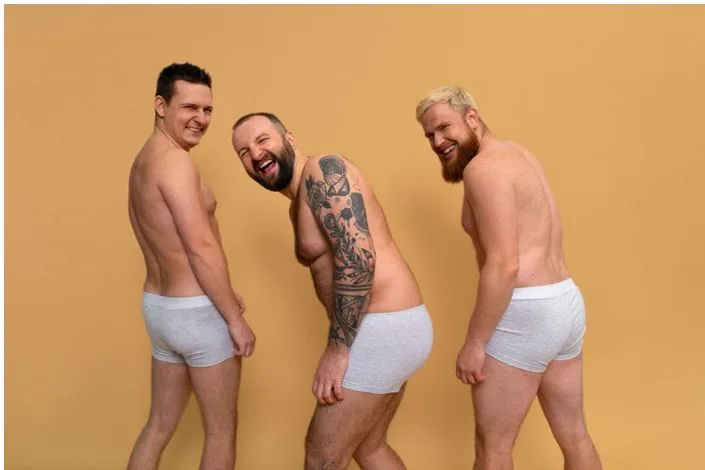The Evolution of Men’s Intimates: From Basics to Statements
For much of modern history, men’s underwear was treated as an afterthought, a purely functional garment hidden from view and rarely discussed. Times have changed. Today, the category has grown into a vibrant sector of fashion where design, identity, and innovation converge. From performance fabrics to bold aesthetics, even brands like Daniel Alexander underwear for men are helping reshape the conversation about what intimate apparel means in a contemporary wardrobe.
This evolution reflects broader cultural changes: men are embracing style not only in what the world sees but also in what remains hidden. Intimates, once considered a basic necessity, are now becoming statements of confidence, individuality, and even social values.
A Functional Beginning
Historically, men’s underwear was all about practicality. Ancient civilizations wore simple loincloths, and later, garments like long johns or basic cotton briefs provided coverage and warmth. Through much of the 20th century, the focus remained on function rather than form. Boxers, briefs, and undershirts were produced in plain fabrics, muted colors, and standardized sizes.
Marketing campaigns reinforced this utilitarian view. Underwear ads emphasized durability and value, rarely mentioning comfort or personal style. For decades, the intimate apparel market for men lagged behind the variety and vibrancy seen in women’s lingerie.
The Shift in the Late 20th Century
Things began to change in the latter half of the 20th century. The cultural revolutions of the 1960s and 1970s introduced new ideas about body image and personal freedom. Men became more open to exploring fashion beyond suits and sportswear.
The 1980s and 1990s saw the rise of underwear as a cultural symbol. Iconic ad campaigns featuring athletes and celebrities transformed briefs and boxer briefs into aspirational items. Underwear was no longer just hidden utility, it became a marker of status, sex appeal, and lifestyle.
Innovation in Fabric and Fit
The 21st century accelerated innovation in men’s intimates. Brands began experimenting with fabrics beyond cotton: modal, bamboo, microfiber, and performance blends entered the market. These materials offered moisture control, breathability, and softness that dramatically improved comfort.
Fit also became a priority. Traditional boxers and briefs were joined by trunks, low-rise briefs, and ergonomically designed cuts. Men could now choose styles that matched not only their wardrobe but their lifestyle, athletic, professional, or leisure-focused.
This era marked the moment when underwear design began catering to individual preference rather than one-size-fits-all function.
From Hidden to Expressive
Perhaps the most striking development in men’s underwear is its transformation into a canvas for self-expression. Bright colors, bold prints, and daring cuts have expanded what was once a limited category.
Collections now include everything from minimalist neutrals to flamboyant designs, catering to men who see underwear as an extension of their personal style. This shift parallels broader changes in menswear, where men feel freer to experiment with silhouettes, accessories, and aesthetics traditionally reserved for women’s fashion.
What was once invisible has become an intimate but meaningful way to showcase individuality.
Cultural Meaning and Inclusivity
Men’s intimates have also become part of larger cultural conversations. Pride collections, gender-neutral underwear, and campaigns featuring diverse body types reflect a fashion industry that is slowly embracing inclusivity.
For LGBTQ+ communities, underwear is more than fabric, it can be a form of identity, empowerment, and visibility. Brands are recognizing this by designing lines that celebrate diversity, offering consumers the ability to choose garments that align with their values and identities.
This inclusivity represents a profound shift: underwear is no longer universal and generic, but instead personal, symbolic, and socially resonant.
Intimates and Lifestyle
Another driver of change is the intersection between underwear and lifestyle trends. As wellness and fitness became priorities, men began demanding performance features in all aspects of their clothing. Underwear was no exception.
Moisture-wicking trunks for workouts, seamless designs for business attire, and breathable fabrics for travel are now common. The line between underwear, activewear, and loungewear has blurred, reflecting how men’s lives and wardrobes have diversified.
The Future of Men’s Intimates
Looking forward, men’s underwear is set to continue evolving in three key directions:
- Sustainability: Eco-friendly fabrics and ethical production methods will increasingly define the category as consumers prioritize environmental responsibility.
- Technology: Smart textiles, antibacterial fibers, and temperature-regulating fabrics could reshape expectations of comfort and performance.
- Fashion-forward design: As men continue embracing fashion as self-expression, underwear will remain part of the style conversation, with even bolder cuts, colors, and campaigns.
In many ways, men’s intimates are no longer an afterthought but a proving ground for innovation in both fashion and culture.
The journey of men’s underwear, from functional basics to statements of identity, mirrors broader cultural and fashion transformations. What was once invisible has become expressive, symbolic, and even aspirational.
Brands like Daniel Alexander highlight how far the category has come, offering garments that combine comfort, innovation, and individuality. For modern men, underwear is more than just the first layer of clothing; it is the foundation of confidence, style, and self-expression.





